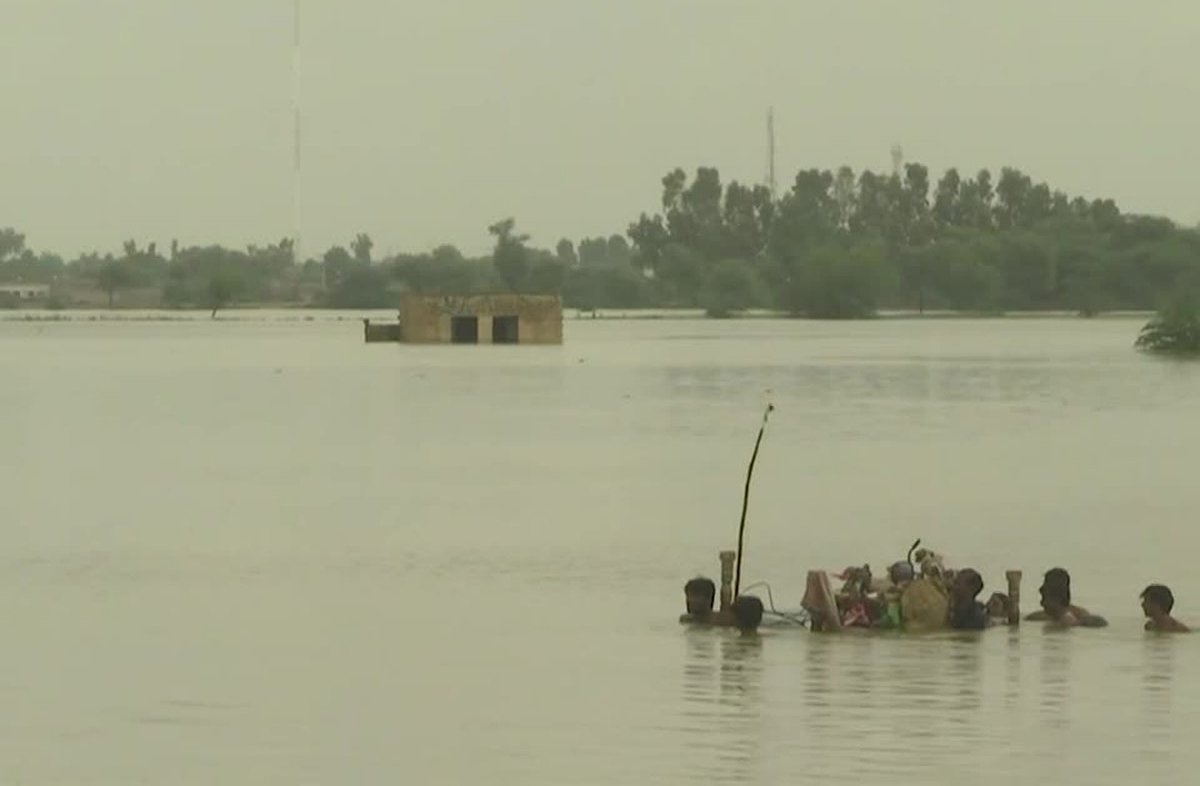Rescue and relief operations are under way across Pakistan, as millions of people, particularly in the country’s southern and northwest regions, remained trapped by the worst floods in the South Asian country’s history.
Makeshift relief camps have sprung up all over Pakistan, in schools, on motorways and in military bases in the wake of the monsoon floods.
Farzana, a resident of Ghulam Shah village in Sindh, one of the worst-affected provinces in the country’s south, said she could no longer provide “shade for our children from the sun” as their homes had been totally submerged.
“I swear to God, there is nothing left. All our belongings have been washed away. We’re poor. Our children are sick. They are just sitting there,” she told Al Jazeera.
“We appeal to the government to help end our miseries at the soonest,” said Mohammad Safar, 38, outside his submerged home in Shikarpur in Sindh.
“The water must be drained out from here immediately so we can go back to our homes.”
There is so much water however, that there is nowhere for it to drain.
Climate Change Minister Sherry Rehman described the country as “like a fully soaked sponge”, incapable of absorbing any more rain.
Monsoon rains have submerged a third of Pakistan, claiming at least 1,190 lives since June and unleashing powerful floods that have washed away swaths of vital crops and damaged or destroyed more than a million homes.
Officials say more than 33 million people are affected, one in every seven Pakistanis, and it will cost more than $10bn to rebuild.
United Nations chief Antonio Guterres called it “a monsoon on steroids” as he launched an international appeal late Tuesday for $160m in emergency funding.
The World Health Organization announced a Grade 3 emergency for the Pakistan floods, its highest level.
Ugochi Daniels, the Organization for Migration’s Deputy Operations Director General, told Al Jazeera that the scale of the emergency is unprecedented, adding that an international assistance is needed.
“The government has really stepped up in responding to this situation. They have long experience as Pakistan is highly disaster-prone,” she said from the capital, Islamabad.
WHO is responding as districts in #Pakistan🇵🇰 continue to be affected by unprecedented levels of flooding.
The impact of the heavy monsoon ⛈️ rains is drastic, affecting 3⃣3⃣ million people in 116 districts across the country.
📌 https://t.co/iUkHk3m2Ig pic.twitter.com/yQ9uwJIoGR
— World Health Organization (WHO) (@WHO) August 31, 2022
























